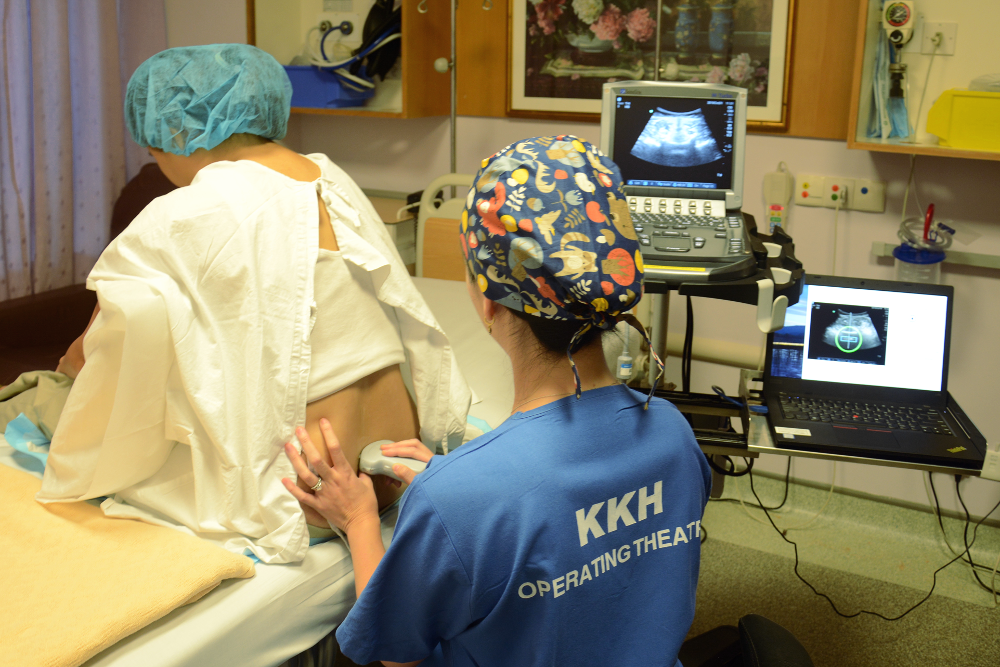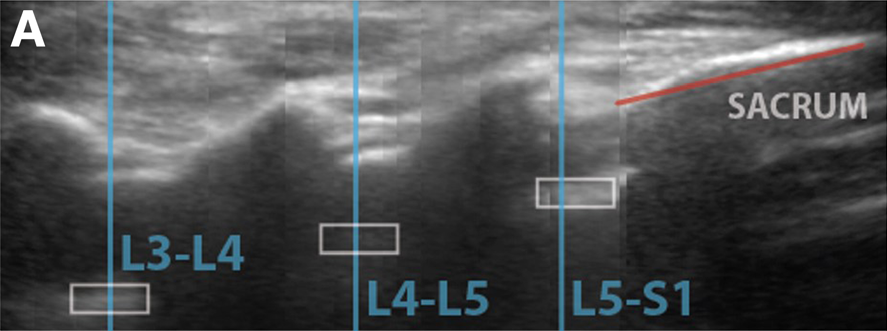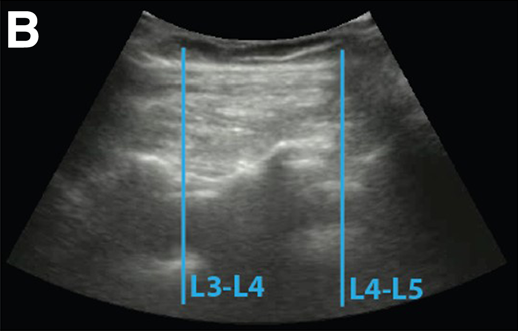
An anaesthetist simulates the use of the AI-powered uSINETM with a mock female patient to locate a spinal landmark.
KKH has collaborated with researchers from the National University of Singapore Department of Electrical and Computer Engineering, to develop a world-first artificial intelligence (AI)-powered ultrasound guided automated spinal landmark identification system which improves the accuracy and success rate of first attempt needle insertion during spinal anaesthesia.
The novel system, uSINETM, uses ultrasound imaging and AI to automatically identify the spinal level of insertion and the midline, so that the spinal needle insertion involved during spinal anaesthesia can be more precise and require fewer attempts. Using a proprietary machine learning algorithm, uSINETM automatically identifies anatomical landmarks during an ultrasound scan, and the anaesthetist is alerted in real-time when the right location and right angle are found (Table 1).
“This is a welcome enhancement to patient care, as spinal anaesthesia administration using uSINETM not only reduces the anxiety, discomfort and pain associated with multiple needle insertions, it also reduces the complications associated with it,” says project lead,
Associate Professor Sng Ban Leong, Head and Senior Consultant, Department of Women’s Anaesthesia, KKH. “This system also plays a significant role in training doctors specialising in anaesthesia to better identify spinal landmarks.”
|
Table 1. How uSINETM works |

|

|
| The graphical interface of the software, integrated with the ultrasound machine, guides the doctor to first identify the spine as a red line. The ultrasound probe then moves up the spine and identifies the posterior arch of the vertebral bone (lamina) which is marked with a white box. | The AI-software programme assists the doctor in finding the best view of the spinal landmark. When the correct site is identified, this is marked with a vertical line at the midline of the probe using a surgical skin marker. |
Clinical study for uSINETM shows 92 per cent first-attempt success rate
A
clinical study was conducted to evaluate the first attempt success rate of spinal anaesthesia using landmarks obtained from uSINETM. It involved 100 women who underwent spinal anaesthesia for surgical procedures at KKH from May 2016 to May 2017. With the use of uSINETM, the success rate for the first attempt needle insertion during spinal anaesthesia was high, at 92 per cent.
Neuraxial anaesthesia procedures are performed by placing a needle between the vertebrae and injecting medication into the epidural or spinal space. These are performed for surgical procedures such as caesarean sections, labour epidural analgesia and some gynaecological surgeries. In the United States of America, more than 1.4 million caesarean sections and 700,000 epidural procedures are performed every year.
“As Singapore’s leading maternity hospital, we want to improve the care for our patients in this area, and uSINETM will help enable this. The study team will be looking at further enhancing the AI-powered system and investigating the use of the system in high-risk patients,” adds Assoc Prof Sng, who was also senior author of the published study.
uSINETM has been licensed to NUS spin-off company, HiCura Medical Pte Ltd, for commercialisation. Efforts to introduce the AI-powered system into clinical practice are ongoing.
The clinical study was approved by the SingHealth Centralised Institutional Review Board and funded by the SingHealth Foundation and National Health Innovation Centre Joint Medical Technology Grant and the National Medical Research Council Centre Grant.

